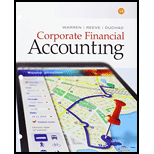
Concept explainers
Aging of receivables; estimating allowance for doubtful accounts
Trophy Fish Company supplies flies and fishing gear to sporting goods stores and outfitters throughout the western United States. The

The following accounts were unintentionally omitted from the aging schedule. Assume all due dates are for the current year except for Wolfe Sports, which is due in the next year.
| Customer | Due Date | Balance |
| Adams Sports & Flies | May 22 | $5,000 |
| Blue Dun Flies | Oct. 10 | 4,900 |
| Cicada Fish Co. | Sept. 29 | 8,400 |
| Deschutes Sports | Oct. 20 | 7,000 |
| Green River Sports | Nov. 7 | 3,500 |
| Smith River Co. | Nov. 28 | 2,400 |
| Western Trout Company | Dec. 7 | 6,800 |
| Wolfe Sports | Jan. 20 | 4,400 |
Trophy Fish has a past history of uncollectible accounts by age category, as follows:
| Age Class | Percent Uncollectible |
| Not past due | 1% |
| 1-30 days past due | 2 |
| 31-60 days past due | 10 |
| 61-90 days past due | 30 |
| 91-120 days past due | 40 |
| Over 120 days past due | 80 |
Instructions
- 1. Determine the number of days past due for each of the preceding accounts.
- 2. Complete the aging of receivables schedule by adding the omitted accounts to the bottom of the schedule and updating the totals.
- 3. Estimate the allowance for doubtful accounts, based on the aging of receivables schedule.
- 4. Assume that the allowance for doubtful accounts for Trophy Fish Company has a debit balance of $3,600 before adjustment on December 31. Journalize the
adjusting entry for uncollectible accounts. - 5. Assume that the adjusting entry in (4) was inadvertently omitted, how would the omission affect the
balance sheet and income statement?
Trending nowThis is a popular solution!

Chapter 8 Solutions
Bundle: Corporate Financial Accounting, Loose-leaf Version, 14th + CengageNOWv2, 1 term Printed Access Card
- The time value of money concept is most relevant toarrow_forwardMia Vision Clinic is considering an investment that required an outlay of $505,000 and promises a net cash inflow one year from now of $660,000. Assume the cost of capital is 13 percent. Break the $550,000 future cash inflow into three components: 1. The cost of capital. 2. The profit earned on the investment.arrow_forwardGENERAL ACCOUNTINGarrow_forward
 Financial And Managerial AccountingAccountingISBN:9781337902663Author:WARREN, Carl S.Publisher:Cengage Learning,
Financial And Managerial AccountingAccountingISBN:9781337902663Author:WARREN, Carl S.Publisher:Cengage Learning, Financial AccountingAccountingISBN:9781305088436Author:Carl Warren, Jim Reeve, Jonathan DuchacPublisher:Cengage Learning
Financial AccountingAccountingISBN:9781305088436Author:Carl Warren, Jim Reeve, Jonathan DuchacPublisher:Cengage Learning Financial AccountingAccountingISBN:9781337272124Author:Carl Warren, James M. Reeve, Jonathan DuchacPublisher:Cengage Learning
Financial AccountingAccountingISBN:9781337272124Author:Carl Warren, James M. Reeve, Jonathan DuchacPublisher:Cengage Learning


